#african romans
Text
Notes on Africans in republican Rome, from Gruen's "Romans and Others":
Rome had a significant population of Black and African-descended people, across a wide array of professions. For any work set after ~250 BCE, there should definitely be Black people in Rome.
Most African Romans were probably originally slaves, either bought through the slave trade, or taken as prisoners of war.
Slavery was not specifically associated with African people, or with any particular ethnic group. The high rate of manumission in cities lead to many Africans holding Roman citizenship.
Roman beauty standards favored light skin, but otherwise the Romans seem to have considered skin color irrelevant.
Intermarriage was common, and busts survive of wealthy Romans with more African facial features, indicating a degree of social mobility.
The Romans did stereotype ethnic groups, but prejudice doesn't appear to have been harsher toward Africans than toward Gauls, Germans, Iberians or Greeks, and there are positive portrayals of Africans in the works of Plautus, Diodorus, Seneca the Younger, Lucian and Philostratus.
The most famous African Romans are Terence the playwright, the emperor Septimius Severus, and Saint Augustine.
Also, Gruen doesn't discuss this, but Roman Africa was actually one of the wealthiest provinces in the empire, had its own Romance language, and many people immigrated there for a better life!
(Erich Gruen, “Romans and Others,” in A Companion to the Roman Republic, ed. Nathan Rosenstein and Robert Morstein-Marx)
(Gruen does use some language that is now outdated or uncomfortable; I will forgive him on account of him being 89, and his overall conclusions are meant to correct racist ideas.)
#things to whack racists with#african romans#erich gruen#jlrrt reads#a companion to the roman republic#Roman diversity#jlrrt essays
79 notes
·
View notes
Text
Time Travel Question 35: Ancient History XVI and Earlier
These Questions are the result of suggestions from the previous iteration.
This category may include suggestions made too late to fall into the correct earlier time grouping. Basically, I'd already moved on to human history, but I'd periodically get a pre-homin suggestion, hence the occasional random item waaay out of it's time period, rather than reopen the category.
In some cases a culture lasted a really long time and I grouped them by whether it was likely the later or earlier grouping made the most sense with the information I had. (Invention ofs tend to fall in an earlier grouping if it's still open. Ones that imply height of or just before something tend to get grouped later, but not always. Sometimes I'll split two different things from the same culture into different polls because they involve separate research goals or the like).
Please add new suggestions below if you have them for future consideration. All cultures and time periods welcome.
#Time Travel#Cybele#Ancient World#Trans History#Vesuvius#Pompeii#Roman Empire#Bog Mummies#Fashion History#Tyrian Purple#Bronze Age#Iron Age#Indigenous History#Egyptian Blue#Mediterranean#Mediterranean Sea#African History#Western Asian History#European History#Queer History#Epidaurus
244 notes
·
View notes
Text

Saint Maurice
Sandstone statue with pigment and gold
Cathedral of Saints Maurice and Catherine, Madgeburg, Germany
ca 1250 CE
#art#archaeology#sculpture#medievaltimes#medieval art#medieval europe#saint maurice#african culture#african history#roman empire#roman history#stone carving#stone sculpture#sandstone
135 notes
·
View notes
Text
Cleopatra & Amanirenas versus the Romans
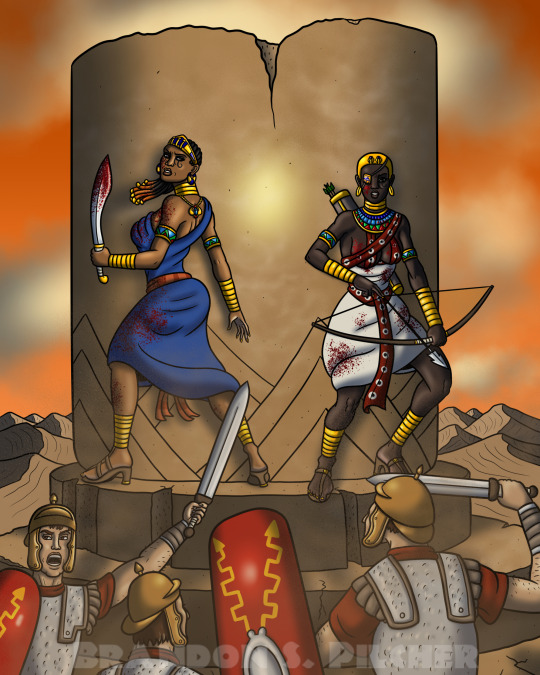
The Nile Valley queens Cleopatra of Egypt and Amanirenas of Kush are up against the wrath of the Roman legions! Can our heroines fight their way out of this predicament and defeat one the mightiest armies in the first century BC?
This is of course a fictional “alternate history” scenario I did for the sheer fun of it, but I really like the idea of Cleo and Amani teaming up against Rome. One wonders whether Cleopatra’s Egypt might have held up a little longer with more Kushite support…
#cleopatra#ancient egypt#egyptian#kemet#amanirenas#ancient kush#kushite#nubian#african#black women#women of color#warrior women#ancient rome#roman#legionaries#fantasy#alternate history#digital art#art#illustration
37 notes
·
View notes
Text




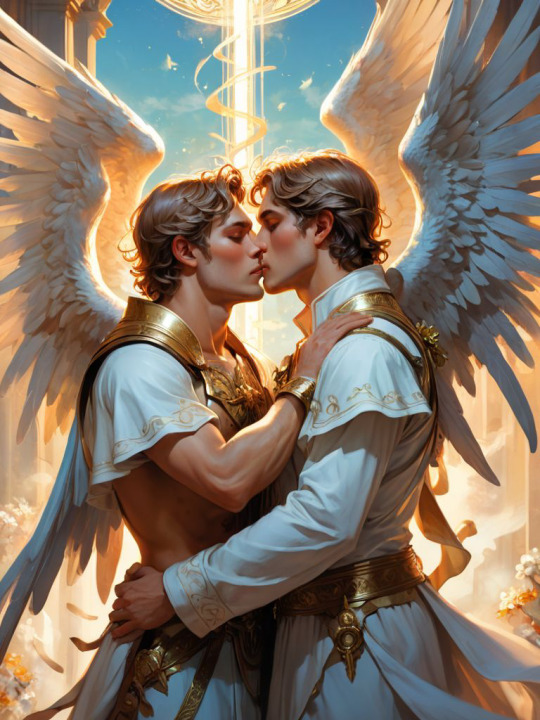



Samurais, cowboys, surfers, angels, african warriors, medieval knights, swimmers, romans: love between men
#ai art#gay#gay art#gay ai art#samurais#angels#cowboys#romans#swimmers#surfers#knights#african warriors
22 notes
·
View notes
Text
At the Ancient Roman Baths

#ai art#midjourney#black beauty#black male beauty#lgbtq#gay#gay male love#gay interracial love#beautiful african men#ancient rome#roman baths
207 notes
·
View notes
Text

Saint Maurice (also Moritz, Morris, or Mauritius; Coptic: Ⲁⲃⲃⲁ Ⲙⲱⲣⲓⲥ) was an Egyptian military leader who headed the legendary Theban Legion of Rome in the 3rd century, and is one of the favorite and most widely venerated saints of that martyred group. He is the patron saint of several professions, locales, and kingdoms.
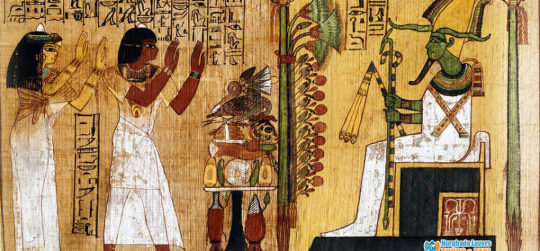
According to the hagiographical material, Maurice was an Egyptian, born in AD 250 in Thebes, an ancient city in Upper Egypt that was the capital of the New Kingdom of Egypt (1575-1069 BC). He was brought up in the region of Thebes (Luxor).
Maurice became a soldier in the Roman army. He rose through the ranks until he became the commander of the Theban legion, thus leading approximately a thousand men. He was an acknowledged Christian at a time when early Christianity was considered to be a threat to the Roman Empire. Yet, he moved easily within the pagan society of his day.
The legion, entirely composed of Christians, had been called from Thebes in Egypt to Gaul to assist Emperor Maximian in defeating a revolt by the bagaudae. The Theban Legion was dispatched with orders to clear the Great St Bernard Pass across the Alps. Before going into battle, they were instructed to offer sacrifices to the pagan gods and pay homage to the emperor. Maurice pledged his men's military allegiance to Rome. He stated that service to God superseded all else. He said that to engage in wanton slaughter was inconceivable to Christian soldiers. He and his men refused to worship Roman deities

Martyrdom
However, when Maximian ordered them to harass some local Christians, they refused. Ordering the unit to be punished, Maximian had every tenth soldier killed, a military punishment known as decimation. More orders followed, the men refused compliance as encouraged by Maurice, and a second decimation was ordered. In response to the Theban Christians' refusal to attack fellow Christians, Maximian ordered all the remaining members of his legion to be executed. The place in Switzerland where this occurred, known as Agaunum, is now Saint-Maurice, Switzerland, site of the Abbey of St. Maurice.
So reads the earliest account of their martyrdom, contained in the public letter which Bishop Eucherius of Lyon (c. 434–450), addressed to his fellow bishop, Salvius. Alternative versions have the legion refusing Maximian's orders only after discovering innocent Christians had inhabited a town they had just destroyed, or that the emperor had them executed when they refused to sacrifice to the Roman gods.
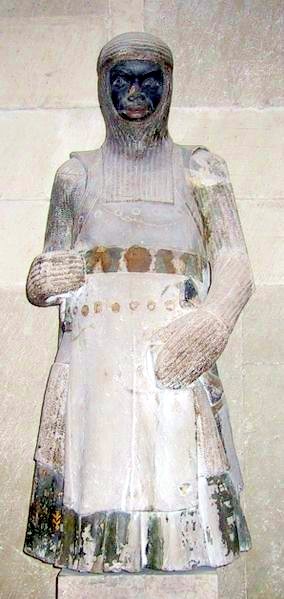
Veneration
Saint Maurice became a patron saint of the German Holy Roman Emperors. In 926, Henry the Fowler (919–936), even ceded the present Swiss canton of Aargau to the abbey, in return for Maurice's lance, sword and spurs. The sword and spurs of Saint Maurice were part of the regalia used at coronations of the Austro-Hungarian emperors until 1916, and among the most important insignia of the imperial throne (although the actual sword dates from the 12th Century). In addition, some of the emperors were anointed before the Altar of Saint Maurice at St. Peter's Basilica. In 929, Henry the Fowler held a royal court gathering (Reichsversammlung) at Magdeburg. At the same time the Mauritius Kloster in honor of Maurice was founded. In 961, Otto I, Holy Roman Emperor, was building and enriching Magdeburg Cathedral, which he intended for his own tomb. To that end,
in the year 961 of the Incarnation and in the 25th year of his reign, in the presence of all of the nobility, on the vigil of Christmas, the body of St. Maurice was conveyed to him at Regensburg along with the bodies of some of the saint's companions and portions of other saints. Having been sent to Magdeburg, these relics were received with great honour by a gathering of the entire populace of the city and of their fellow countrymen. They are still venerated there, to the salvation of the homeland.
Maurice is traditionally depicted in full armor, in Italy emblazoned with a red cross. In folk culture he has become connected with the legend of the Holy Lance, which he is supposed to have carried into battle; his name is engraved on the Holy Lance of Vienna, one of several relics claimed as the spear that pierced Jesus' side on the cross. Saint Maurice gives his name to the town St. Moritz as well as to numerous places called Saint-Maurice in French speaking countries. The Indian Ocean island state of Mauritius was named after Maurice, Prince of Orange, and not directly after Maurice himself.
Over 650 religious foundations dedicated to Saint Maurice can be found in France and other European countries. In Switzerland alone, seven churches or altars in Aargau, six in the Canton of Lucerne, four in the Canton of Solothurn, and one in Appenzell Innerrhoden can be found (in fact, his feast day is a cantonal holiday in Appenzell Innerrhoden).Particularly notable among these are the Church and Abbey of Saint-Maurice-en-Valais, the Church of Saint Moritz in the Engadin, and the Monastery Chapel of Einsiedeln Abbey, where his name continues to be greatly revered. Several orders of chivalry were established in his honor as well, including the Order of the Golden Fleece, Order of Saints Maurice and Lazarus, and the Order of Saint Maurice. Additionally, fifty-two towns and villages in France have been named in his honor.
Maurice was also the patron saint of a Catholic parish and church in the 9th Ward of New Orleans and including part of the town of Arabi in St. Bernard Parish. The church was constructed in 1856, but was devastated by the winds and flood waters of Hurricane Katrina on 29 August 2005; the copper-plated steeple was blown off the building. The church was subsequently deconsecrated in 2008, and the local diocese put it up for sale in 2011. By 2014, a local attorney had purchased the property for a local arts organization, after which the building served as both an arts venue and the worship space for a Baptist church that had been displaced following the hurricane.
On 19 July 1941, Pope Pius XII declared Saint Maurice to be patron Saint of the Italian Army's Alpini (mountain infantry corps). The Alpini have celebrated Maurice's feast every year since then.
The Synaxarium of the Coptic Orthodox Church of Alexandria does not mention Saint Maurice, although there are several Coptic churches named for him.
#african#deep reddish brown skin#north african#coptic#coptic orthodox#alexandria#catholic#roma#roman#gaul#saint maurice#moors#morr#moor#pope#pope pius xii#new orleans#south#south side#baptist#churc#church#egyptian#egypt#kemet#ta meri
213 notes
·
View notes
Text
Asgardian, Vanir, Alfheimr, Olympus, Talokanil, Wakandan and Nidavellir cuisines in MCU HCs
Basically, Asgardians eat a mixture of Ancient Nordic, Medieval and Renaissance European foods
Since it is a colder planet in comparison to Alfheim, Asgard has a number of stews and roasts
Bread and potatoes are literally staples amongst Asgardian cuisine
Oh, and seafood is a popular culinary choice in Asgard too
One of Loki's fave foods is salmon stew btw
In MCU, Vanir cuisines are actually a mix of Central Asian, Slavic, Mongolic and Far East Siberian cuisines
Yeah Vanir culture has some nods to Central Asian, Slavic, Mongolic and Far East Siberian cultures in MCU btw
So the Vanirs LOVE dumplings, stews, LAMB AND MUTTON PREPARED IN ANY WAY, and a hunch of dairy in breakfasts
Light Elven cuisine of Alfheim basically has several nods to Mediterranean and Balkan cuisines
Basically it's got a hunch of fruits and vegetables, sweets and baked treats being VERY popular in Alfheim, and edible flowers are also popular in Alfheim too
Breakfasts are at times served in little trays of breakfast goods with fruit/floral scented tea or coffee ( imagine like an Ottoman style breakfast )
A popular street food includes hand pies of different flavours - sweet, savory, spicy, etc
Also a cultural drink of Alfheim is actually wine - as in different types of wine, not just wine made from grapes ( and the Light Elven grown ups in general LOVE to drink wine )
Dwarven cuisine in Nidavellir basically has a mix of elements of Germanic and Slavic cuisine
Being a more blacksmith geared culture, the Dwarves in general usually eat protein and dairy often as a way to sustain themselves in blacksmith relater stuff ( especially for Dwarven blacksmiths )
The Dwarves in general love a good drink - a cultural drink of Nidavellir is actually beer ( and the Dwarven grown up in general drink A LOT beer )
Wakandan cuisines defo has nods to East African and Nubian cuisines
Wakanda is rife in spices, and alcohol is popular for grown ups in Wakanda in general
Teas and coffees are popular in Wakanda too, amongst the staples of Wakanda include beans and maize
Olympus cuisines are defo have nods to Ancient Roman and Grecian cuisines
Olympus is rife with olives and fruits and vegetables - and the Olympus grown up residents in general LOVE wine
Oh and they also love cheeses ( which is a popular desert in Olympus )
Talokanil cuisines defo have nods to Mayan cuisine
Since they are an underworld kingdom, Namor's family actually managed to figure out underwater agricultural and all And underwater food supplies
Seafood is rife in Talocan, and ofc edible seaweeds and corals are amongst popular cuisines in Talocan
Amongst staples of Talokanil cuisine include maize, chili peppers and beans
And coffee and chocolate drinks are amongsr popular drinks in Talocan
🤩🤩🤩🥺🥺🥺
#asgardian cuisine#vanir cuisine#mcu nine realms#light elven cuisine#dwarven cuisine#nordic cuisine#germanic cuisine#slavic cuisine#mediterranean cuisine#olympus cuisine#talokanil cuisine#wakandan cuisine#mayan foods#east african cuisine#ancient greek cuisine#ancient roman cuisine
20 notes
·
View notes
Text
greetings people!!
so, i am a (newer) dm in regards to dnd 5e, but i am passionate about creating fun worlds and stories and games (etc) and thus have started a new homebrew world that i truly want to take much time on. i really want this world to be inspired by greek, roman, african, and hindu mythology because i find them really interesting and filled with culture. unfortunately, im unsure of where to start or what good resources are out there, particularly for african and hindu mythology.
so basically, im asking if anyone if the tumblr aether can help me procure proper sources (ANY sources, really), or can point me towards the right direction on where to start. i took a glance at my local librarys website and couldnt find any good sources, and im currently searching online for sources, but the more help i can get, the better. thank you!!!!!!
also, its worth mentioning that i unfortunately only know one language so english sources/translations are kind of necessary :[
#dnd#dnd 5e#d&d#d&d 5e#homebrew#dnd homebrew#dungeons and dragons#dungeon master#ttrpg#greek mythology#roman mythology#african mythology#hindu mythology
4 notes
·
View notes
Text

Finally, a real medieval elephant appears! Just not where you might expect.
Katie Hemer, Hugh Willmott, Jane Evans, and Michael Buckley have shown that this ring was made from an African elephant's (genus Loxodonta's) ivory tusk in the fifth or sixth century. It was probably used as a handle on a cloth bag. It was found in a grave in Scremby, Lincolnshire (UK), where it had been buried sometime between around 450 and 550 AD.
And this wasn't the only elephant ivory to show up thousands of miles away in northern Europe: elephant ivory rings have been found in over 70 cemeteries in the area that is now England, and some have been found in the area that is now northern Germany, too. These cemeteries seem to date to the period before the 7th century.
This particular elephant may have originated in the African Rift Valley, and its ivory may have been traded from the Kingdom of Aksum to Europe. The time when it was traded coincided with the political power of the Roman Empire crumbling in western Europe and some (but not all) trade routes being disrupted. Yet the world has always been interconnected: we can't ignore the history of any region or any time.
Katie A. Hemer, Hugh Willmott, Jane E. Evans, Michael Buckley,
"Ivory from early Anglo-Saxon burials in Lincolnshire – A biomolecular study", Journal of Archaeological Science: Reports,
49 (2023), 103943, ISSN 2352-409X, https://doi.org/10.1016/j.jasrep.2023.103943.
Read it here.
13 notes
·
View notes
Video
youtube
The Major Role The Roman Catholic Church and Major Universities Played in Slavery of Africans..
#The Major Role The Roman Catholic Church and Major Universities Played in Slavery of Africans#slavery#catholic church#white lies#white hate#white supremacy#catholic church and slavery of Africans#reparations
9 notes
·
View notes
Text
if you could go back in history and reverse ONE major historical event, what would it be?
#historical events#major historical events#history#ancient greece#roman empire#africa#african history#colonialization#colonialism#british empire#slavery#capitalism#communism#world war 2#world war 1#ukraine#ukraine war#russian terrorism#gay rights#queer rights#lgbtq rights#lgbtq history#queer history#trans history#christianity#catholic#jesus#religion#genocide#judaism
12 notes
·
View notes
Text
there were empanadillas at the function today and like!!! i only had two but!! i wish i would’ve had more because!!! they tasted just like the ones my aunt makes (and she uses my abuelita’s recipe)!!! so they literallyyyy tasted like my childhood!!!!! one thing about me, i am a fiend for some fried dough with meat & peppers & other goodies stuffed inside it!!! like num num num, yes please!!!
#i literally could’ve just had empanadillas & pumpkin pie & i would’ve been happy#pol’s diary <3#culturally i’m soooo white washed but!!!#the one puerto rican thing i did grow up with was the food & besties i love the fuckin food#cocina criolla is unmatched besties!! it’s unmatched!!!#it’s like the best of the carribean (african & indigenous influences) mixed with that latin flare and it’s so fucking delciousssssss#i mean i also grew up roman catholic which is like hella common in latam#but… ehh does that really count? lmaooo#boricua#puerto rico
4 notes
·
View notes
Text
Dea Africa
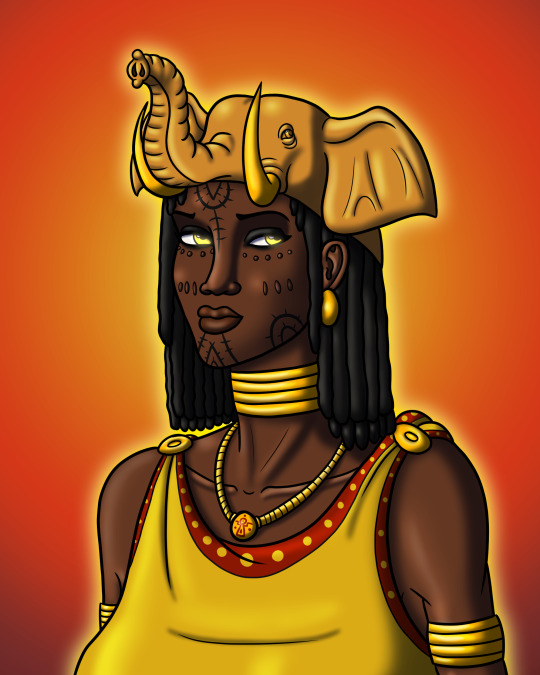
This is my portrait of Dea Africa, a Roman goddess-like entity who personified the imperial province of Africa (which to them meant the area of Tunisia and the northwestern coast of modern Libya). Roman artists traditionally depicted her wearing a helmet modeled after an African elephant’s head and with braided or dreadlocked hair, but otherwise made her look more Italian than African in accordance with their prevailing beauty ideals. Nonetheless, I wanted my version to look, well, African even without the elephant helmet, with some ritual scarifications and Amazigh-style tattoos to boot.
Dea Africa is unlikely to have been a major deity in the Roman pantheon, but sometimes she was associated with a cornucopia (horn of plenty) to represent fertility, which may refer to Rome’s North African provinces serving as a breadbasket for the Empire.
#Dea Africa#roman mythology#roman#african#black woman#woman of color#dark skin#amazigh#north african#digital art#art
3 notes
·
View notes
Text
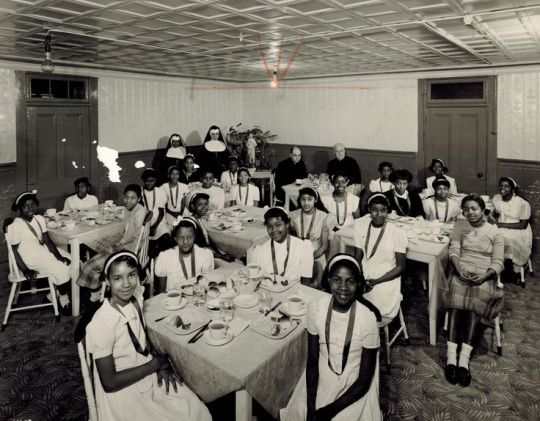
#catholicism#roman catholic#catholic#black america#1940s#african american#black catholics#black catholicism#black girls
4 notes
·
View notes
Text
I’m kinda hooked on Netflix’ docutainment shows. Although I treat them more like cheaply produced fictional period dramas that are loosely based on some historical events.
I already watched Rise of Empires: Ottoman, The Last Czars, Queen Cleopatra and Blood, Sex & Royalty. I also started African Queens: Njinga and Roman Empire. Do you have any other recommendations on this kind of genre?
#rise of empires: ottoman#The Last Czars#Queen Cleopatra#African Queens Njinga#blood sex and royalty#Roman Empire#Netflix#period drama#costume drama#historical drama
6 notes
·
View notes